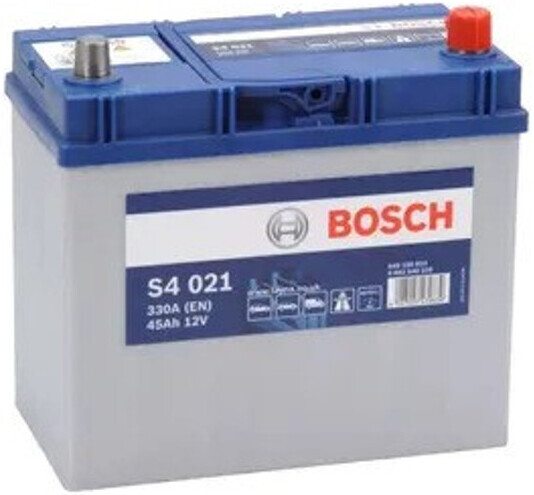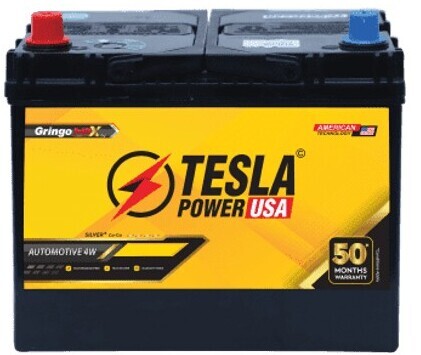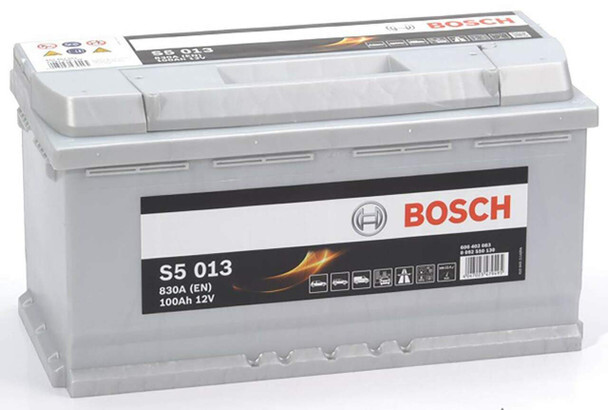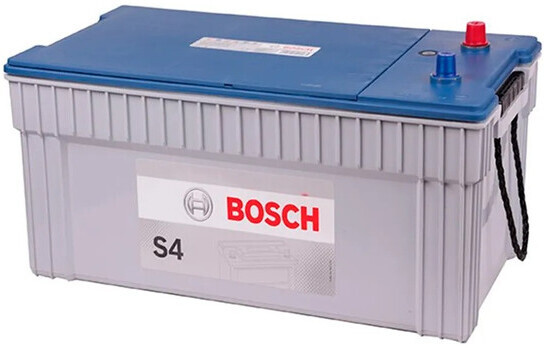Troubleshooting Common Automotive Battery Problems in Welding Vehicles
Introduction
A reliable automotive battery is crucial for welding vehicles, as it powers both the vehicle itself and additional electrical components, such as welding machines and auxiliary equipment. A failing battery can cause delays, impact welding performance, and even lead to costly repairs. This guide highlights the most common battery issues in welding vehicles and how to troubleshoot them effectively.
Bosch Automotive and Starter Battery S4 45AH 12V
Key Takeaway
-
Regular Battery Checks Prevent Failures – Performing routine voltage tests and inspecting for corrosion can help identify issues before they cause major problems.
-
Common Issues Include Slow Cranking and Rapid Discharge – Symptoms like difficulty starting the engine or the battery losing charge quickly often indicate deeper electrical or battery health issues.
-
Corrosion and Loose Connections Affect Performance – Cleaning battery terminals and ensuring secure cable connections can prevent power loss and improve efficiency.
-
Alternator Problems Can Mimic Battery Issues – A weak or faulty alternator may cause battery drain, so always test both components when diagnosing power issues.
Common Automotive Battery Problems in Welding Vehicles
Battery Not Holding Charge
One of the most frequent issues in welding vehicles is a battery that won't hold a charge. This can be caused by:
-
Aging battery: Most automotive batteries last between 3-5 years. If yours is older, it may no longer retain power efficiently.
-
Faulty alternator: If the alternator isn’t charging the battery properly, the battery will drain quickly.
-
Parasitic drain: Electrical components (such as lights, radios, or improperly wired accessories) may continue drawing power even when the engine is off.
Solution:
-
Test the battery voltage with a multimeter; a fully charged battery should read 12.6V or higher when off and 13.7V–14.7V when the engine is running.
-
Check the alternator’s output. If it's below 13V, it might need replacement.
-
Inspect for any electrical components left on that could be draining power.
Slow Engine Cranking
If the engine struggles to start, the battery might be weak or underpowered. This issue can stem from:
-
Low charge due to infrequent use
-
Cold weather reducing battery performance
-
Loose or corroded battery terminals
Solution:
-
Ensure the battery terminals are clean and tightly connected.
-
Charge the battery fully before attempting to start the engine.
-
If the battery frequently struggles to start, it may be time for a replacement.
Tesla Power USA 74Ah Car Battery TPXXDIN74L
Frequent Battery Drain
Welding vehicles often have multiple electronic accessories, including inverters and lighting systems. If the battery drains too quickly, it could be due to:
-
High power consumption from welding equipment
-
Poor battery maintenance
-
Electrical shorts or faulty wiring
Solution:
-
Use a battery with sufficient capacity (amp-hour rating) for heavy-duty applications.
-
Turn off unnecessary electrical devices when the vehicle is not in use.
-
Check for wiring faults or shorts in the system.
Diagnosing Automotive Battery Issues
Proper diagnosis is key to resolving battery problems in welding vehicles. Here are the most effective steps:
Using a Multimeter to Check Battery Voltage
-
Turn off the engine and set a multimeter to DC voltage mode.
-
A healthy battery should read 12.6V or higher. If it reads below 12.4V, it needs charging.
-
When the engine is running, the voltage should be 13.7V–14.7V. If it’s lower, the alternator may be faulty.
Inspecting Battery Terminals and Wiring
-
Look for corrosion, dirt, or loose connections on battery terminals.
-
Clean terminals using a baking soda and water solution, then apply petroleum jelly to prevent future corrosion.
-
Ensure all cables are securely attached to avoid power loss.
Checking for Parasitic Battery Drain
-
Disconnect the negative battery terminal and connect a multimeter in amperage mode.
-
If the reading is above 50mA, there is excessive drain.
-
Remove fuses one by one to identify the circuit causing the drain.
Bosch Automotive and Starter Battery 100AH 12V
Best Practices for Battery Maintenance in Welding Vehicles
To avoid frequent battery issues in welding vehicles, proper maintenance is essential. Follow these best practices to keep your battery in optimal condition:
Regular Battery Voltage Testing
-
Use a multimeter to check the battery charge level weekly.
-
If voltage drops below 12.4V, recharge the battery to prevent deep discharge, which shortens battery life.
Cleaning and Securing Battery Terminals
-
Corrosion can cause poor connectivity and voltage drops. Regularly clean terminals with a baking soda and water solution and apply terminal grease to prevent future buildup.
-
Ensure battery cables are tight and free from damage to maintain a solid connection.
Ensuring Proper Charging Practices
-
Avoid overcharging, which can cause overheating and battery swelling.
-
If the vehicle is idle for long periods, use a battery maintainer or trickle charger to keep the charge level stable.
Using Heavy-Duty Batteries Suited for Welding Applications
-
Welding vehicles require high-capacity, deep-cycle batteries that can withstand frequent charge and discharge cycles.
-
Choose a battery with a high cold-cranking amps (CCA) rating to handle high-power welding operations.
Bosch Automotive and Starter Battery S4 200AH 12V
When to Replace Your Welding Vehicle Battery
Even with proper maintenance, automotive batteries eventually wear out. Here are signs that indicate it's time for a replacement:
Signs of Battery Failure
-
The engine struggles to start frequently, even after charging.
-
Voltage readings remain low even after a full charge.
-
The battery case is bloated or leaking fluid.
-
There is excessive corrosion or damage on the battery terminals.
-
The battery is older than 3-5 years and showing signs of reduced performance.
Choosing the Right Replacement Battery
-
Select a battery with a high amp-hour (Ah) rating for long-lasting power.
-
Ensure the battery is compatible with your vehicle's alternator and charging system.
-
Consider sealed, maintenance-free batteries to reduce upkeep.
Bosch Automotive and Starter Battery S4 155AH 12V
Frequently Asked Questions
1. How often should I check my welding vehicle's battery?
It’s recommended to check your battery at least once a month for voltage levels, corrosion, and overall condition. If you use your welding vehicle frequently, consider checking it weekly.
2. What type of battery is best for welding vehicles?
A deep-cycle battery with high cold-cranking amps (CCA) and amp-hour (Ah) capacity is ideal. These batteries handle repeated charging cycles and provide consistent power for welding operations.
3. Why does my battery keep draining quickly?
Rapid battery drain can be due to parasitic electrical loads, a faulty alternator, corroded terminals, or using a battery with insufficient capacity for welding operations. Check for power leaks and upgrade to a heavy-duty battery if necessary.
4. Can I use a car battery for a welding vehicle?
Standard car batteries are not designed for high-energy demands. A deep-cycle, heavy-duty battery is recommended for welding vehicles to ensure durability and efficiency.
Conclusion
Maintaining a reliable battery is essential for welding vehicles, as it powers not only the engine but also critical welding equipment. Regular inspections, proper charging habits, and using a high-quality deep-cycle battery can prevent unexpected failures and costly downtime. By following the troubleshooting tips and maintenance guidelines in this guide, you can ensure optimal battery performance for your welding operations.
For high-quality automotive batteries suitable for welding vehicles, visit Tikweld welding Supplies. Browse a wide range of heavy-duty batteries, chargers, and welding accessories at competitive prices.











